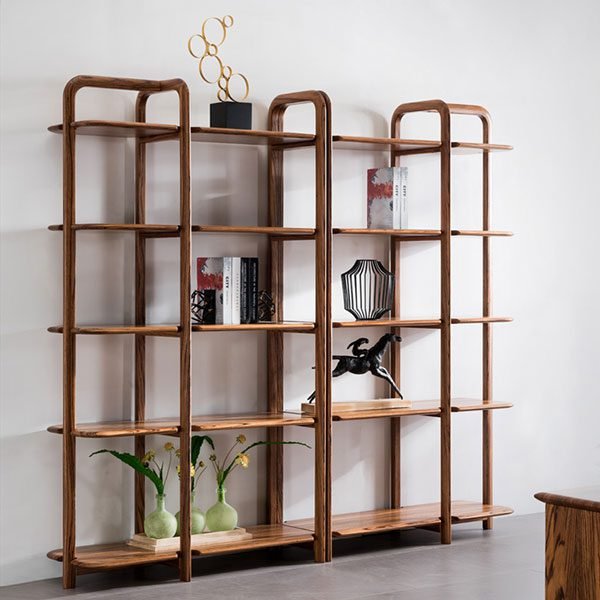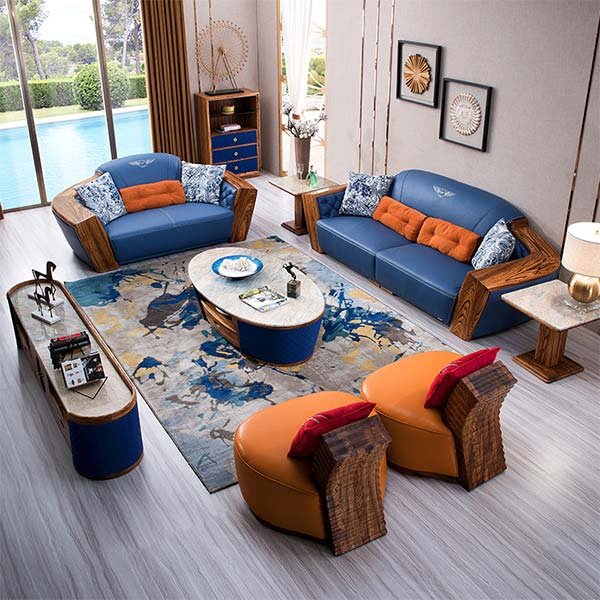“Timeless durability: Wooden furniture, a lasting legacy.”
Benefits of Wooden Furniture for Longevity
Wooden furniture has been a popular choice for centuries, and for good reason. Not only does it add a touch of elegance and warmth to any space, but it also boasts impressive longevity compared to furniture made from other materials. In this article, we will delve into the benefits of wooden furniture for longevity, shedding light on why it remains a timeless investment.
One of the key advantages of wooden furniture is its durability. Unlike materials such as plastic or metal, wood is known for its strength and resilience. It can withstand the test of time, making it an excellent choice for furniture that is meant to last. Whether it’s a sturdy dining table or a solid oak bookshelf, wooden furniture is built to withstand daily wear and tear, ensuring that it remains in excellent condition for years to come.
Another factor that contributes to the longevity of wooden furniture is its ability to age gracefully. Unlike other materials that may deteriorate or lose their appeal over time, wood develops a beautiful patina as it ages. This natural aging process adds character and charm to the furniture, making it even more desirable as the years go by. With proper care and maintenance, wooden furniture can retain its beauty and functionality for generations.
Furthermore, wooden furniture is highly versatile and can adapt to different styles and trends. Unlike furniture made from synthetic materials, wooden pieces can be easily refinished or repainted to match changing interior design preferences. This flexibility allows homeowners to update their décor without having to replace their furniture, saving both time and money in the long run.
In addition to its durability and versatility, wooden furniture is also environmentally friendly. Wood is a renewable resource, and responsible sourcing practices ensure that forests are properly managed and replenished. By choosing wooden furniture, consumers can contribute to the preservation of our planet’s natural resources and reduce their carbon footprint.
Moreover, wooden furniture is often handcrafted, adding a touch of artistry and craftsmanship to each piece. Skilled artisans take pride in creating furniture that is not only functional but also aesthetically pleasing. This attention to detail and dedication to quality craftsmanship further enhances the longevity of wooden furniture, as it is built to withstand the test of time.
Lastly, wooden furniture has a timeless appeal that transcends trends and fads. It exudes a sense of warmth and authenticity that is hard to replicate with other materials. Whether it’s a classic oak dining table or a rustic pine dresser, wooden furniture adds a touch of elegance and sophistication to any space. Its timeless beauty ensures that it will never go out of style, making it a wise investment for those seeking longevity in their furniture choices.
In conclusion, wooden furniture offers numerous benefits for longevity. Its durability, ability to age gracefully, versatility, environmental friendliness, craftsmanship, and timeless appeal all contribute to its long-lasting nature. Investing in wooden furniture is not only a practical choice but also a wise one, as it will continue to bring beauty and functionality to your home for years to come. So, why settle for anything less when you can enjoy the longevity and timeless elegance of wooden furniture?
Comparison of Wooden Furniture with Other Materials
Wooden furniture has been a popular choice for centuries due to its timeless appeal and durability. However, with the advent of modern materials, such as plastic and metal, the longevity of wooden furniture has come into question. In this article, we will compare wooden furniture with other materials to gain insight into its longevity.
One of the key advantages of wooden furniture is its natural strength and durability. Wood is a sturdy material that can withstand the test of time. Unlike plastic or metal, which can easily break or bend under pressure, wooden furniture is known for its resilience. This makes it a reliable choice for long-term use.
Another factor that contributes to the longevity of wooden furniture is its ability to age gracefully. Over time, wood develops a beautiful patina that adds character and charm to the piece. This natural aging process enhances the aesthetic appeal of wooden furniture, making it a timeless addition to any interior.
In contrast, plastic furniture is prone to cracking and fading over time. Exposure to sunlight and extreme temperatures can cause plastic to become brittle and lose its original color. Similarly, metal furniture is susceptible to rust and corrosion, especially in humid environments. These factors significantly reduce the lifespan of plastic and metal furniture compared to wooden furniture.
Furthermore, wooden furniture can be easily repaired and restored. Minor scratches or dents can be sanded down and refinished, restoring the piece to its original condition. This is not possible with plastic or metal furniture, as repairs are often more complicated and costly. The ability to restore wooden furniture ensures its longevity and allows it to be passed down through generations.
Additionally, wooden furniture is environmentally friendly compared to other materials. Wood is a renewable resource that can be sustainably harvested. In contrast, plastic is derived from non-renewable fossil fuels, and the production of metal furniture requires extensive mining and energy consumption. By choosing wooden furniture, consumers can contribute to the preservation of our natural resources.
In terms of maintenance, wooden furniture requires regular care to ensure its longevity. It should be cleaned and polished regularly to prevent dirt and moisture from damaging the wood. However, with proper maintenance, wooden furniture can last for decades, if not centuries.
In conclusion, wooden furniture surpasses other materials in terms of longevity. Its natural strength, ability to age gracefully, and ease of repair contribute to its durability. Additionally, wooden furniture is environmentally friendly and can be passed down through generations. While plastic and metal furniture may have their advantages, they cannot match the timeless appeal and longevity of wooden furniture. So, if you are looking for furniture that will stand the test of time, wooden furniture is the way to go.
Tips for Maintaining and Extending the Lifespan of Wooden Furniture
Wooden furniture has been a popular choice for centuries due to its timeless beauty and durability. However, like any other material, wooden furniture requires proper care and maintenance to ensure its longevity. In this article, we will provide you with some valuable tips on how to maintain and extend the lifespan of your wooden furniture.
First and foremost, it is essential to keep your wooden furniture clean. Dust and dirt can accumulate on the surface, leading to scratches and dullness over time. Regularly dusting your furniture with a soft cloth or using a vacuum cleaner with a brush attachment can help remove any loose particles. Additionally, using a mild soap solution and a damp cloth can effectively clean any stains or spills without damaging the wood.
Another crucial aspect of maintaining wooden furniture is protecting it from moisture. Wood is a natural material that can expand and contract with changes in humidity levels. Excessive moisture can cause the wood to warp or crack, significantly reducing its lifespan. To prevent this, it is advisable to keep your furniture away from direct sunlight and sources of heat, such as radiators or fireplaces. Using a humidifier or dehumidifier can also help regulate the humidity levels in your home.
Furthermore, it is essential to avoid placing hot or wet objects directly on the surface of your wooden furniture. Heat can cause the finish to blister or discolor, while moisture can leave behind unsightly watermarks. Using coasters, trivets, or placemats can provide a protective barrier and prevent any damage.
Regularly polishing your wooden furniture can also help maintain its beauty and extend its lifespan. Polishing not only adds a layer of protection but also enhances the natural shine of the wood. However, it is crucial to use the right type of polish for your specific furniture. For example, oil-based polishes are suitable for antique or unfinished wood, while wax-based polishes work well on finished wood. Always follow the manufacturer’s instructions and test the polish on a small, inconspicuous area before applying it to the entire piece.
In addition to cleaning and polishing, it is essential to inspect your wooden furniture regularly for any signs of damage or wear. Loose joints, cracks, or splinters should be addressed promptly to prevent further deterioration. Depending on the severity of the damage, you may need to seek professional help or consider repairing or refinishing the furniture yourself.
Lastly, proper storage can significantly contribute to the longevity of your wooden furniture. When not in use, it is advisable to cover your furniture with a breathable fabric cover to protect it from dust and scratches. Additionally, storing wooden furniture in a climate-controlled environment, such as a basement or attic, can help minimize the effects of temperature and humidity fluctuations.
In conclusion, maintaining and extending the lifespan of wooden furniture requires regular cleaning, protection from moisture and heat, proper polishing, regular inspections, and appropriate storage. By following these tips, you can ensure that your wooden furniture remains beautiful and functional for years to come. Remember, investing time and effort in caring for your furniture will pay off in the long run, allowing you to enjoy its timeless appeal for generations.
Заключение
Заключение: Изучение долговечности деревянной мебели по сравнению с другими материалами показывает, что дерево имеет преимущества в этом отношении. Деревянная мебель может прослужить долгие годы, если правильно ухаживать за ней и предоставлять ей соответствующую защиту от влаги и повреждений. Она обладает естественной прочностью и устойчивостью к износу, что делает ее отличным выбором для долговечной мебели. Однако, следует отметить, что существуют и другие материалы, такие как металл и пластик, которые также могут быть долговечными при правильном использовании и уходе. В конечном счете, выбор материала для мебели зависит от индивидуальных предпочтений и требований потребителя.



